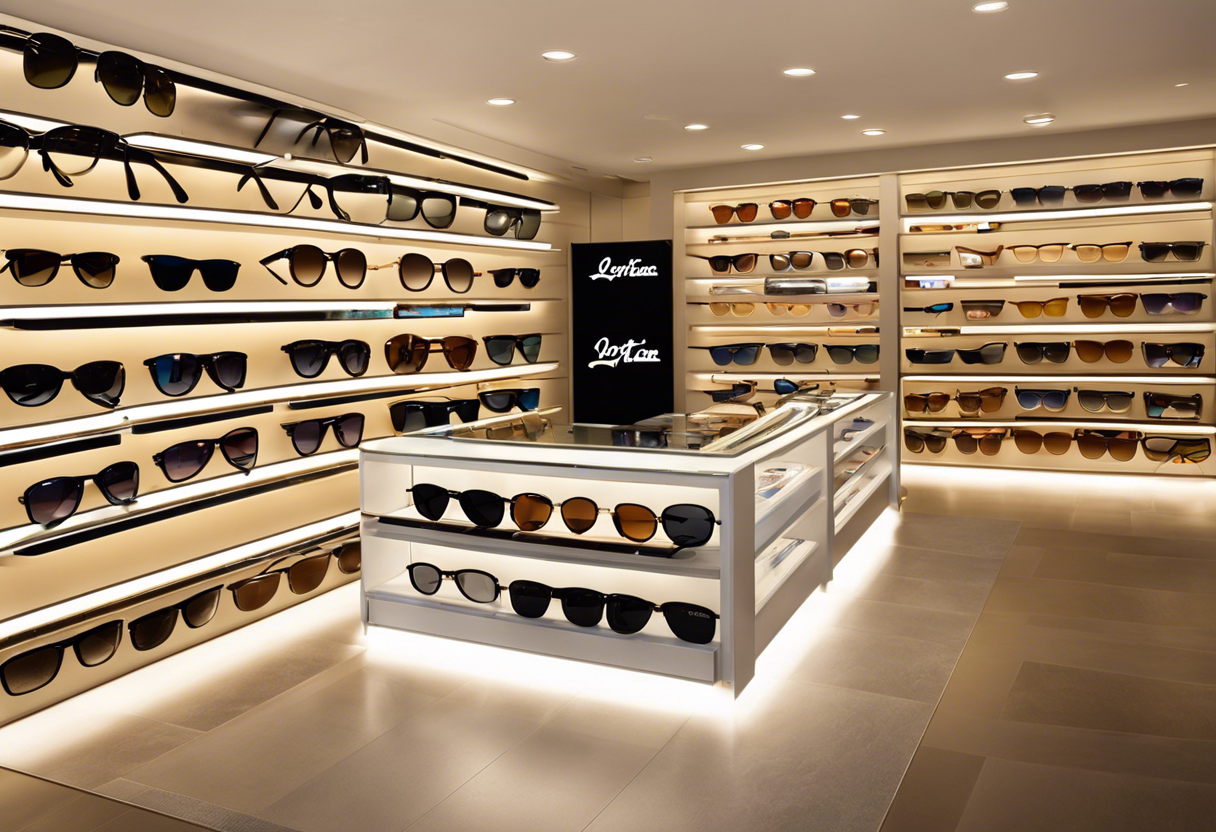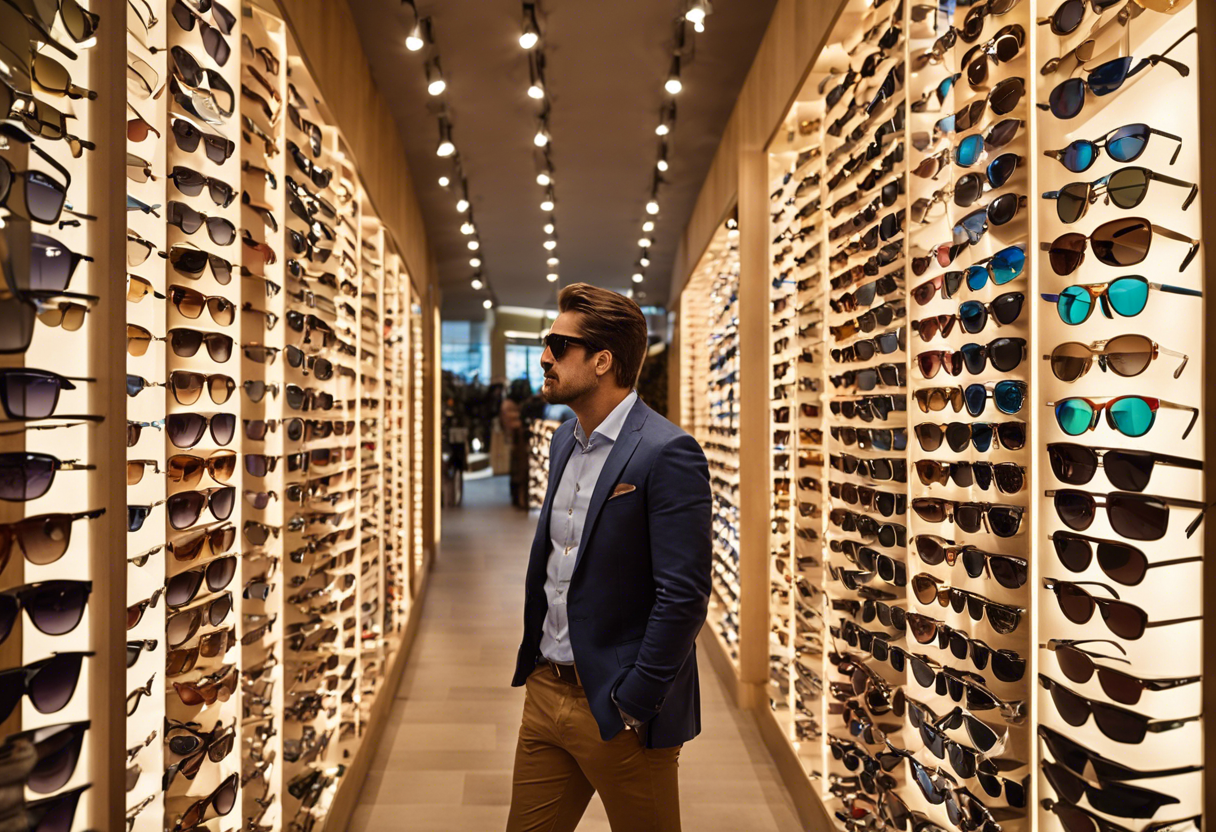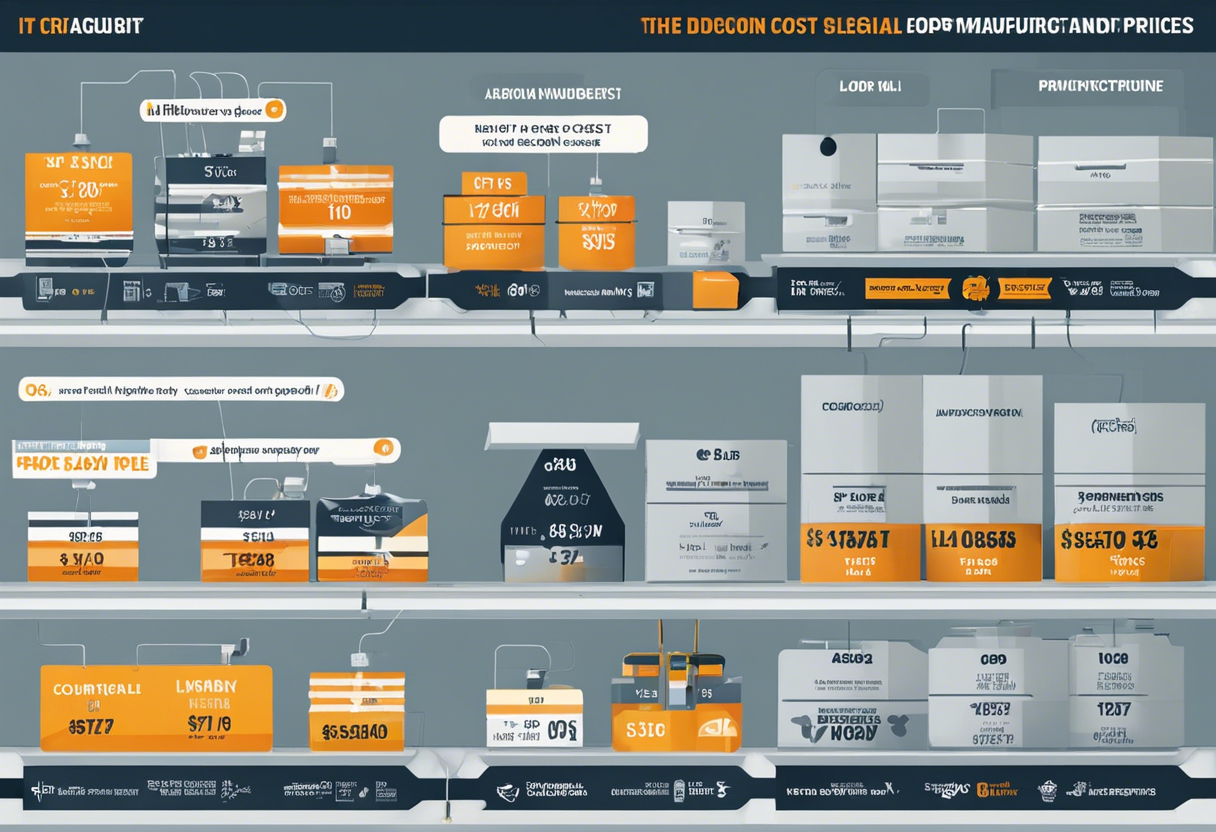The Unseen Monopoly: How the Sunglasses Industry is Shielding the Truth
Here's an overview:
- Introduction: Peering Behind the Shades
- The History of Sunglasses and Their Rise to Popularity
- A Closer Look at Luxottica: The Titan Behind the Lenses
- Market Dominance: How a Single Entity Controls the Industry
- Price Inflation and Illusion of Choice in Sunglass Brands
- Mainstream Media & Advertising: Crafting Consumer Perception
- The Impact of Monopoly on Design and Innovation
- Uncovering the Reality of Manufacturing Costs vs. Retail Prices
- Investigating the Quality: Are We Paying for the Brand or the Product?
- Regulatory Oversight: Are There Checks and Balaces?
- Consumer Awareness: How Much Do We Really Know?
- Strategies for Informed Purchasing: Finding Authenticity and Fair Pricing
- Conclusion: Seeing Clearly - The Future of Sunglasses Industry
Introduction: Peering Behind the Shades

In the glare of the midday sun, a pair of sunglasses offers more than mere relief; they signify style, status, and an aura of mystique. Yet, the average consumer remains largely unaware of the machinations at play within the sunglasses industry. Dominated by a handful of powerful entities, this seemingly diverse market is, in fact, an elaborate mosaic carefully orchestrated by a monopoly that deftly shields its dominion from public scrutiny. As we delve into the veiled dynamics of this industry, we uncover how consumer perceptions are shaped by strategic brand positioning and market consolidation, all under the watchful eye of a singular corporate powerhouse.
The History of Sunglasses and Their Rise to Popularity

Sunglasses date back to ancient civilizations, with examples such as Rome, where emperors watched gladiators fight through polished light-reducing gems. In 12th-century China, judges wore smoke-colored quartz lenses to conceal their eye expressions in court.
The modern sunglasses' evolution accelerated in the 20th century. Movie stars donned them, crafting an image of glamour and intrigue, while advertisements played up the allure of a life shielded from the relentless gaze of the sun. Demand soared as sunglasses became a staple of fashion and practicality. Military use during the World Wars further solidified their presence, emphasizing function over style. Following the wars, sunglasses surged into the civilian market, with improvements in UV protection and the birth of renowned brands.
Their rise to mass popularity is intertwined with cultural trends, technological advancements, and strategic marketing, leading to their ubiquitous presence in contemporary society.
A Closer Look at Luxottica: The Titan Behind the Lenses

Luxottica Group, the indisputable leader of the eyewear industry, is not a common household name, yet its influence is vast. Originating in Italy, Luxottica crafts over 75% of the world's premium eyewear brands, dictating trends and prices. This behemoth owns a multitude of brands, including Ray-Ban, Oakley, and Persol, alongside producing glasses for designer names like Chanel, Prada, and Versace.
Furthermore, the company controls key retail chains such as LensCrafters, Sunglass Hut, and Pearle Vision, tightening its grip on the market. Its vertical integration strategy extends to eye care, owning the EyeMed vision care plan. With control spanning from manufacturing to retail, Luxottica's market dominance remains unchallenged, cleverly hidden behind a myriad of brand names.
Market Dominance: How a Single Entity Controls the Industry

In the complex tapestry of global commerce, few industries are dominated by a single entity quite like the sunglasses market. This market dominance is not accidental but the result of strategic acquisitions and brand management. The leading company, controlling a significant market share, possesses a vast portfolio of popular eyewear brands. This singular dominance raises concerns over:
- High barriers to entry for new competitors.
- The ability to set prices without substantial market pushback.
- Influence over retail channels, dictating what consumers find on shelves.
- Reducing consumer choice under the illusion of diversity.
By effectively managing multiple brands, this entity has created an illusion of competition while maintaining a tight grip on the industry, often to the detriment of both competitors and consumers.
Price Inflation and Illusion of Choice in Sunglass Brands

Consumers often face price inflation and a faux variety among sunglass brands. A single corporation, Luxottica, dominates the market, controlling significant players like Ray-Ban and Oakley, and retail chains including Sunglass Hut. Through strategic acquisitions and partnerships, Luxottica sets elevated price points industry-wide, diminishing true competition. Meanwhile, shoppers encounter an illusion of choice, navigating brands that, unbeknownst to them, fall under the same corporate umbrella. This tactic obscures market monopolization, as consumers, swayed by brand differentiation, remain unaware of the consolidated control over pricing and design.
Mainstream Media & Advertising: Crafting Consumer Perception

The mainstream media and advertising spheres play pivotal roles in shaping public opinion. They deploy sophisticated strategies that subtly influence consumer behavior. These tactics include:
- Celebrity endorsements, presenting sunglasses as must-have fashion accessories.
- Strategic product placements within popular films and television shows.
- Crafting narratives that associate certain brands with luxury and exclusivity.
- Leveraging social media influencers to tap into younger demographics.
- Publishing articles that emphasize the health benefits of high-end sunglasses.
Through such methods, these industries manipulate consumer perception, often obfuscating the monopolistic practices within the sunglasses industry.
The Impact of Monopoly on Design and Innovation

Monopolistic control in the sunglasses industry significantly stifles design and innovation. When fewer companies hold the majority of market share, they are less incentivized to push creative boundaries or invest in groundbreaking technologies. This leads to a homogenization of styles and technological advancements moving at a snail's pace. Consumers receive a narrow spectrum of choices, potentially void of the rich variety that a competitive market might offer. Design risks are seldom taken, as the dominant player sets trends rather than responds to them, limiting the potential for diverse aesthetic and functional innovation.
Uncovering the Reality of Manufacturing Costs vs. Retail Prices

The sunglasses industry often exhibits a striking disparity between manufacturing costs and retail prices. Manufacturers may produce sunglasses at relatively low costs, utilizing economies of scale and cost-effective materials. However, the retail price can be exponentially higher, sometimes marked up by over 1000%. This significant difference is typically justified by branding efforts, marketing strategies, and the perceived value associated with luxury or designer names. Companies argue that research, design, and advertising warrant these higher prices, yet consumers are left questioning the true value behind their purchases. Understanding this dynamic is crucial in assessing the market's transparency and fairness.
Investigating the Quality: Are We Paying for the Brand or the Product?

Consumer dissatisfaction often stems from the discrepancy between brand reputation and actual product quality. When purchasing sunglasses, individuals may unwittingly buy into a brand's marketed prestige rather than the item's material merit. Notably, numerous high-end sunglasses are manufactured by a single entity, resulting in nearly identical products across various name brands. Consequently, the differentiation in performance and quality is marginal. This raises important questions about value. Are consumers genuinely remunerating for superior craftsmanship and design or merely subsidizing name-brand eminence? The industry's lack of transparency makes it challenging to ascertain the actual cost of quality, implying that brand identity might heavily outweigh tangible product refinement in determining price.
Regulatory Oversight: Are There Checks and Balaces?

Regulatory bodies exist to prevent monopolistic practices, but their effectiveness varies globally. In the sunglasses industry, oversight can be fragmented:
- Antitrust Laws: Countries enforce antitrust laws to prevent monopolies, but enforcement is inconsistent, with some firms circumventing regulations.
- Competition Commissions: These exist to monitor unfair market practices, yet they may lack the resources to challenge dominant companies effectively.
- Consumer Protection Agencies: They advocate for consumer rights but are often reactive, intervening after consumer harm has occurred, not preemptively.
- Transparency Requirements: Corporate transparency is mandated, necessitating companies to disclose business practices, but disclosure doesn't always equate to action against monopolies.
Engagement with these oversight mechanisms is critical to addressing the unseen monopoly in the eyewear market.
Consumer Awareness: How Much Do We Really Know?

Consumers often perceive the sunglass industry as highly competitive with abundant choices. However, the reality is strikingly different. Unknown to many, a single powerhouse potentially dominates a vast share of the market, dictating trends, prices, and availability. Despite the illusion of variety, this obscured monopoly challenges the very notion of free consumer choice. The majority of buyers remain unaware of the consolidation behind the diverse brands they encounter, highlighting a substantial gap in consumer awareness and transparency within the industry.
Strategies for Informed Purchasing: Finding Authenticity and Fair Pricing

To circumnavigate the dominant monopoly and find genuine products at fair prices, consumers should adopt the following strategies:
-
Research Brands and Pricing: Conduct thorough online research to compare prices across various retailers and platforms to ensure you are getting fair market value.
-
Verify Authenticity: Check for certifications, trademarks, and reviews to confirm the authenticity of the sunglasses. Avoid purchases from dubious sources.
-
Seek Independent Retailers: Look beyond the big chains and explore independent retailers who may offer more competitive pricing and unique, quality options.
-
Utilize Coupons and Sales: Take advantage of seasonal sales, discounts, or coupons which can significantly lower the cost of authentic eyewear.
-
Favor Transparency: Support brands that offer clear information about their manufacturing processes, material sources, and pricing strategies.
Conclusion: Seeing Clearly - The Future of Sunglasses Industry

As the sunglasses industry moves forward, transparency and consumer education will become increasingly critical. With growing awareness of monopolistic practices, independent brands are gaining traction, challenging the status quo through innovative designs and business models. Advancements in material science are poised to introduce eco-friendly and technologically superior options, reflecting a shift towards sustainability and smart eyewear. This evolution will likely reshape market dynamics and offer buyers clear-cut choices that cater to a diversity of needs and preferences, promising a bright, competitive, and diverse future for the sunglasses industry.
